My 3-Day Adventure in Kota Kinabalu Borneo
I recently got the privilege of spending 3 unforgettable days exploring Kota Kinabalu Borneo, a fantastic little town in northern Borneo. This city is the capital of the Sabah state in Malaysia and is well-known for being a beach and adventure destination.
Kinabalu National Park is here, home to the imposing Mount Kinabalu. Colorful markets, a long boardwalk along the beach, and a famous mosque make it an incredibly cool place to visit if you want to step off the beaten path. And that’s just what I did on my 3-day trip!
A little background on Borneo: The island is shared by three countries: Malaysia, Indonesia, and Brunei. It’s a rugged and unspoiled place that’s rich in wildlife, steamy rainforest landscapes, biodiversity, and wild beaches with breathtaking coastal and mountain views.
A short one hour flight from Kuala Lumpar, I traveled to Sabah, a region of rich heritage and amazing natural wonder. A melting pot of Hindu, Muslim, Malay and Chinese traditions and cultures, it’s a very laidback and welcoming place that’s still fit for backpackers and would-be wanderers where you can really get away from it all.
After exploring temples in Cambodia, I was excited to see the rugged island of Borneo and hike the famed Mt. Kinabalu. I landed in the capital city of Kota Kinabalu Borneo (Kota for short) to start my trip.
I got to spend 3 days in Kota Kinabalu Borneo and it ended up being so much more than I could’ve hoped for! While I’m sharing the details of my visit, I may include some affiliate links here and there. These help me earn a small commission at no cost to you if you choose to make a purchase through them, so thank you for your support! Now, let’s talk Borneo.
-
- 👉 Find the perfect hotel
- 🚗 Rent a Car
- 🥾 Find a nearby Trail
- 🧳 Pack the perfect suitcase with these packing cubes
- 👉 All the gear you need for your adventure
- 📱Grab an E-Sim for travel abroad

Kota Kinabalu Borneo: First Impressions
The city of Kota is lively, and travelers can find everything they need here before setting off on a number of adventures. You will find fantastic restaurants of all kinds, with great Indian, Chinese and Thai food, as well as shopping, adventure gear stores, and much more. From Kota Kinabalu Borneo, you can go on excursions to snorkel and scuba dive, trek through the jungle, hike throughout Kinabalu National Park, and see orangutans up close.
While I was here, I had a chance to do many of these things like orangutans encounters, dive the Tunku Abdul Rahmen reef, shop and eat in the open markets in Kota, and climb Mount Kinabalu.
While Kota is a great jumping off point for exploring Borneo, there are a few things you should know when visiting this region.
Borneo’s Struggle With Pollution, Threatened Wildlife Habitats, and Litter
Borneo as a whole and Kota in particular really struggle with pollution and litter, as well as deforestation and habitat destruction. Most of the illegal palm oil in the world comes out of Borneo and many animals, Orangutans are one are under constant threat from the global demand for palm oil and other resources that have resulted in a great instance of slash and burn agriculture that destroys habitat.
Additionally, the riverway outside my hotel was full of plastic waste, floating debris, and trash, and after speaking to some other locals, I found out that this waste stream continues for hundreds of miles throughout the jungle and all throughout the continent. There is more trash than water in many places. A construction site across the way was letting all their refuse just fall into the river and along the waterfront, which is hyped as being the tourist area of Kota. The trash was piled up along the pathway and blowing into the ocean with no trash cans in sight.
The government has begun to educate the locals on how to clean up litter, but they estimate that it will take more than 30 years to change the habits of this continent. An initiative called the Heart of Borneo has also been successful in setting aside land for protection with a total of 185 acres of land now being protected. Thanks to this and recent global news of Borneo’s habitat destruction, more is starting to be done on this grave issue.
Visiting Rasa Ria Nature Park
Located at the Shangri-La Resort outside Kota Kinabalu, the nature reserve here is home to a few orphaned orangutans that have been rescued from high-risk areas throughout Borneo. The reserve is also home to several families of long tail macaque, a Sumatran rhinoceros, and many birds. Park rangers bring you to a viewing platform, where myself and other guests were able to watch as two orangutans played, swung, and laughed as they bent the trees and stole snacks from the rangers.
Soon, a family of monkeys came by to steal what there was to eat. The monkeys were very entertaining—tickling each other, falling off branches, and chasing one another across the vines. One of the monkeys with her baby clenching her belly cried in distress when the others would get too close. Visiting here, even though it’s not in the wild, was one of the highlights of this trip.
I had a chance to interview one of the rangers and learn more about the critical work they are doing to protect orphaned and endangered animals, and they are a true blessing to the community and the endangered animals they protect. For those interested and with more time on their hands, you can travel farther east in Borneo to Sarawak. This is where a much larger rehabilitation center for orangutans exists. This facility, called the Semanggoh Rehabilitation Center, has been operating for more than 20 years.
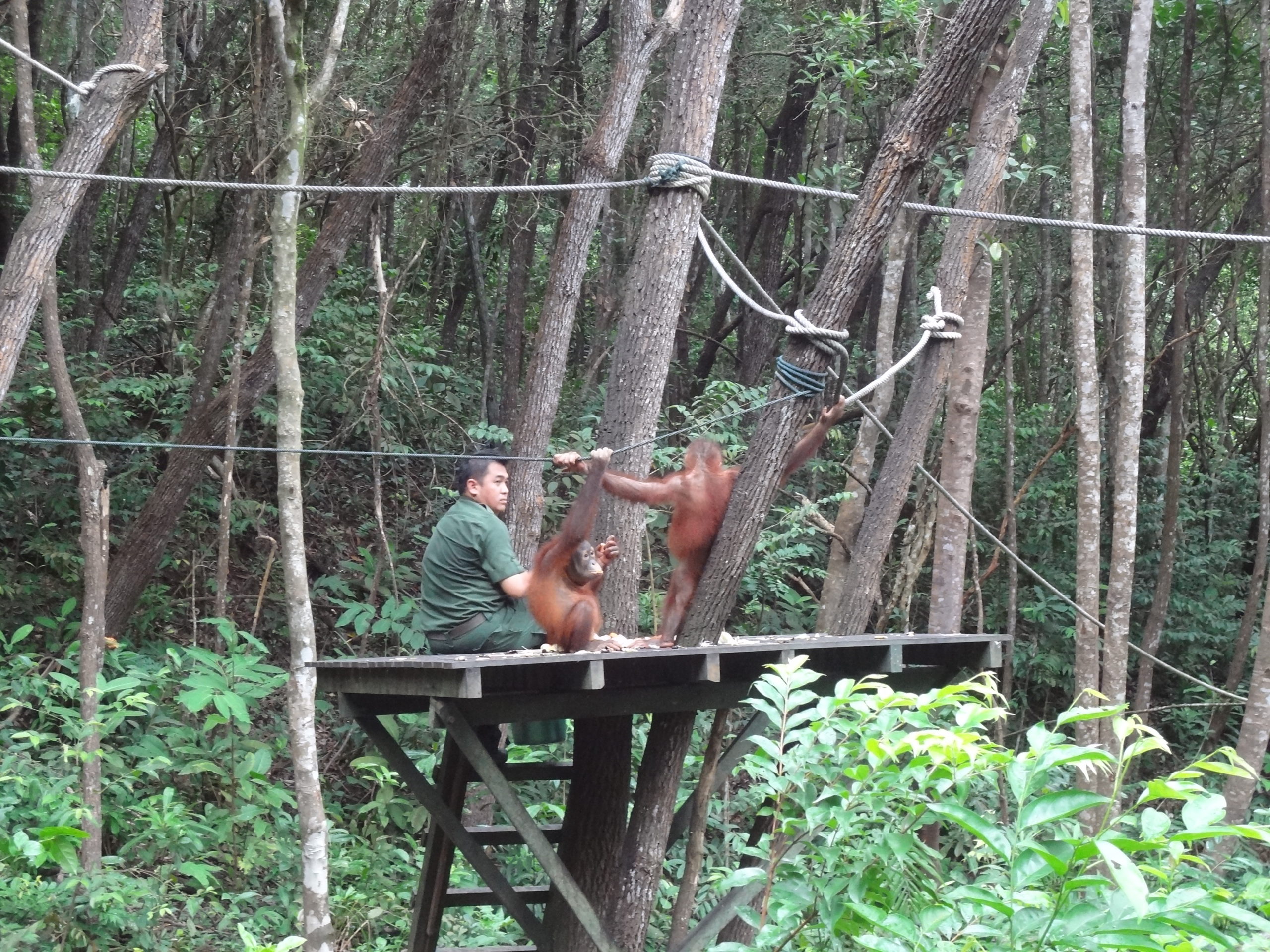
Exploring the Jungles and Rainforests of Borneo
The jungles of Borneo are some of the oldest on the planet. They are home to a vast web of life and many of the species have yet to be discovered—the biodiversity here is mind-blowing. It is estimated that over half the plant and animal species on Earth are found in the jungles of Borneo, which are being destroyed by humans at an alarming rate. More than 30% of the rainforest has been destroyed in the last 40 years and deforestation has lead to the deaths of more than 160,000 orangutans in just 16 years.
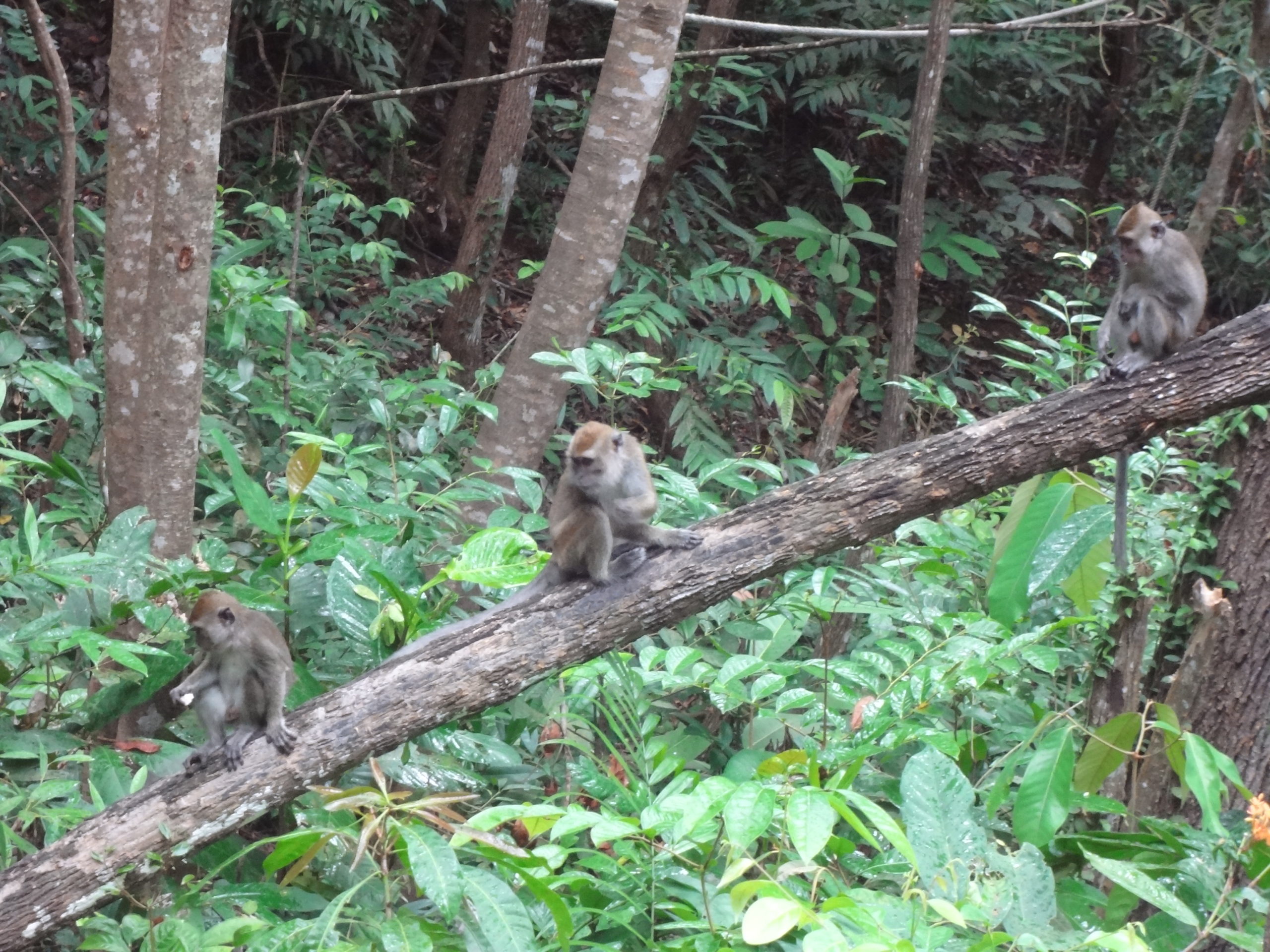
Climbing Mt. Kinabalu
It was from Kota Kinabalu Borneo that I set off to hike Mount Kinabalu. At 4,095 meters high, it’s the highest peak between the Himalayas and New Guinea. Climbing to its peak requires a guide, since the park is both a UNESCO World Heritage Site and a national park.
The climb is staged as an overnight climb, taking two days with a night spent at a refugio. After being picked up in the early morning from Kota, I set off via a van for the hour-long drive to the Kinabalu National Park. The drive brings you through beautiful tropical lowlands and up into the steamy rainforest, where I would begin my hike and really see the biodiversity and wonder of this place.
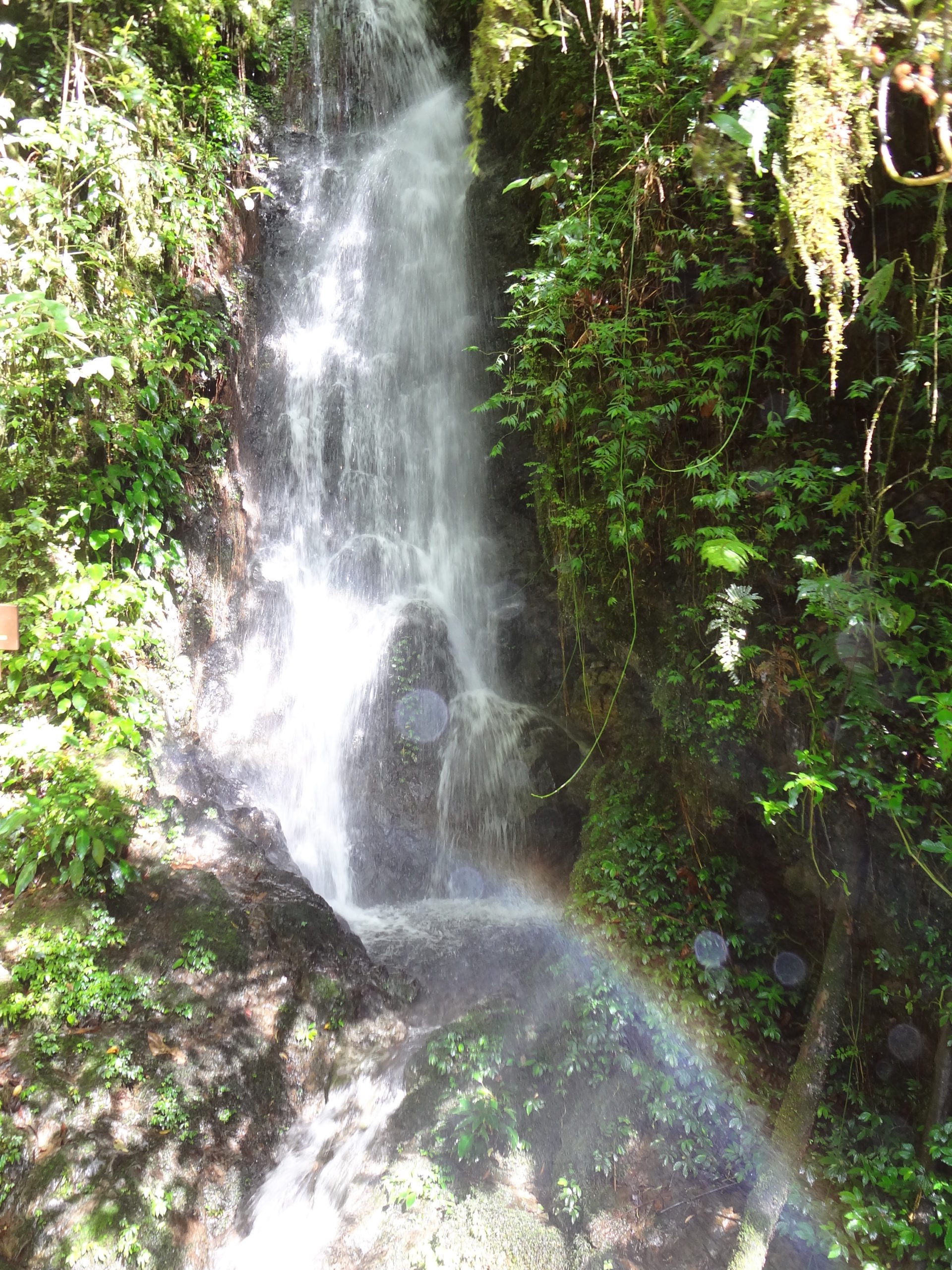
After arriving to the mountain base with my tour company, Adventure Borneo, I dropped my luggage and got ready for a climb through the jungle. I would be spending one night and 2 days hiking the 8.3 kilometers to the summit. With my mountain guide, I set off into the humidity of the jungle for what I thought would be an easy day.
I kept my ears open and my eyes ready to spot some of the over 300 species of birds that live within Kinabalu National Park. I was quickly breathless in the hot air and stairs, so many stairs….luckily for me and all the other climbers, there was a rest stop with great information about the biodiversity of the mountainside every kilometer or so. This, and the endless porters carrying packages the size of people on their backs passing you, keeps you motivated to continue.
As I continued to hike, the jungle melded into a cloud forest that swallows the mountainside from view, hiding itself like an ancient secret. As I continued to hike through the clouds and into the scrub forest, the trees give way to a dark and imposing rock face that’s hidden away most of the day by clouds. Only a lucky few see its true magnificence—and that’s precisely why I’m here.
I was having a hard time in the heat with such a steep climb, and after about 4 kilometers, I was ready to stop. My boyfriend, who I had convinced to come along, seemed to be bounding along even though he had all the camera gear. Our guide, who obviously does this hike weekly, was strolling along like it was a walk in the park. He was even smoking a cigarette most of the climb! Feeling out of shape, I was ecstatic when we began to see the outlines of the rest houses on the horizon. We arrived at Base Camp at last and a hot lunch awaited us.
At our rest stop roughly 6 kilometers up, an afternoon rainstorm turned a trickle down the mountainside into a roaring waterfall, absolutely ripping its way across the rock face and down to whence we had come. It was here, at the Laban Rata Rest House, that I enjoyed a hot cup of soup, a rainbow, and a nap before having a great dinner of salads, Malay dishes, and dessert. Then it was time to settle in for a few hours of rest before our 1:45am wake-up call for the hike to the summit.
The cool, early-morning mountain air quickly brought me back to life. With headlamps lighting the way, we set off up the trail and into the dark beyond. The afternoon rains from the previous day had turned the trail into a trickling river, but cold feet would not stop me. Hiking through the last of the scrub and passing the 7-kilometer check point, we came to a rock face laced with ropes. It was here that the trail got very exciting and where the nervous turned back.
After scaling the cliff face for a few hours, the summit was finally in view, but the air was thin and the temperature frigid. For some reason the thin air enlivened me and I sprinted to the top, getting a breathtaking view of Borneo as I waited for the sun to rise over the ocean and bring light to the jungle.
Tip: Don’t worry if you aren’t a prepared hiker—the rest house shop has headlamp rentals, warm clothes, and plenty of snacks and things to keep you hydrated.
Guides: Guides are required to hike Mt. Kinabalu, as it is part of the World Heritage Site. Make sure you book direct, as there are many fake companies trying to get hired for guide service. We used Amazing Borneo.
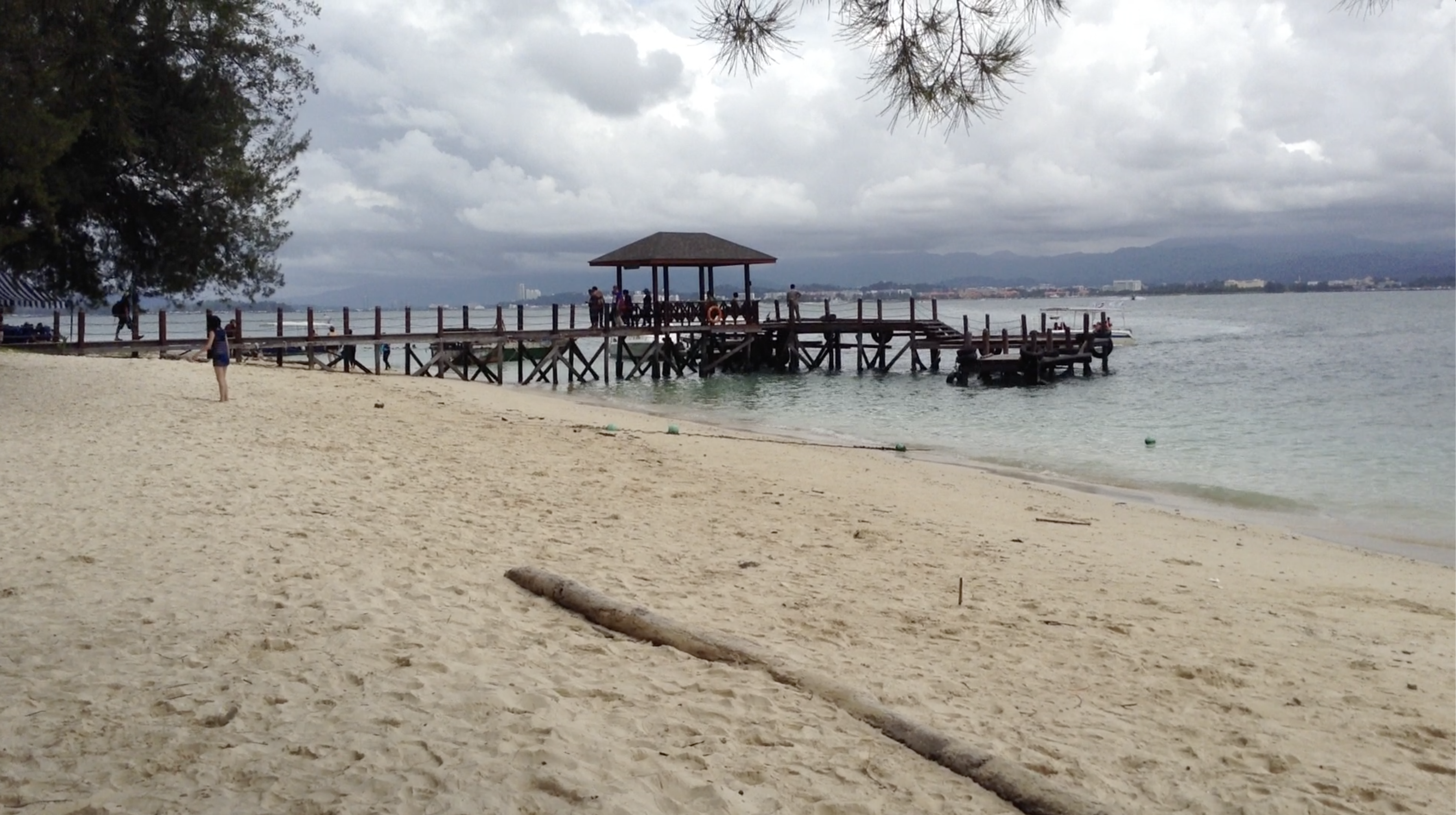
A Day at Tunku Abdul Rahman Park
After visiting orangutans and climbing Mt. Kinabalu, my last activity in Kota Kinabalu Borneo was a day on and in the water. I had been told that Borneo has some of the most beautiful reefs in the world. My hope had been to visit the island of Sipadan off the eastern coast of Tawau, but the logistics would have added several days I did not have to my itinerary.
Kota Kinabalu also has several reefs within the vicinity that can be snorkeled or scuba dived, so I planned to head to the marina and hop in a boat destined for some of the islands off the coast. Our first stop was the island of Manukan, which is a popular spot for locals and tourists. Many people brought picnics to spend the day and enjoy the beach. The island has some facilities with a small store, restrooms, and dock. Snorkel gear in hand, I jumped in the water just hoping to see colorful fish, corals and clear waters.
Unfortunately, what I saw were plastic water bottles, a diaper and other plastic waste. While I did see fish and corals, I was saddened by the onslaught of human trash and litter that had made its way into the ocean.
My swim through debris was cut short by a sudden rain storm. Most of the island visitors crammed their way under the one awning on the dock to wait for the return of one of the island boats to return us to the mainland. The boat ride back was one of the most interesting of my life. With almost zero visibility, the open boat and its passengers were drenched to the bone. We had no idea if we were going in the right direction, so the driver decided to point us in the direction of land and drive straight until we see it. Then, we would know when to turn and head north back towards Kota Kinabalu Borneo.
After drying off at my hotel and having a final meal of chicken curry and fried rice, it was time to head back to the airport and off to my next destination: Bali, Indonesia.
Like this article? Pin Me
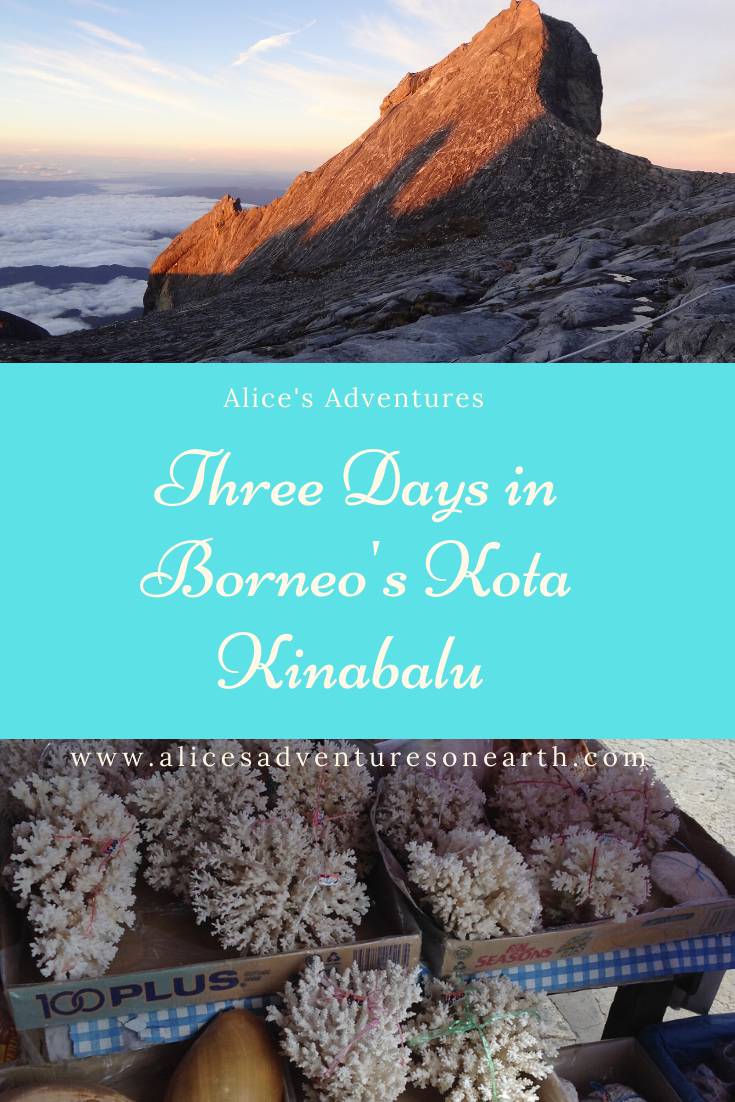


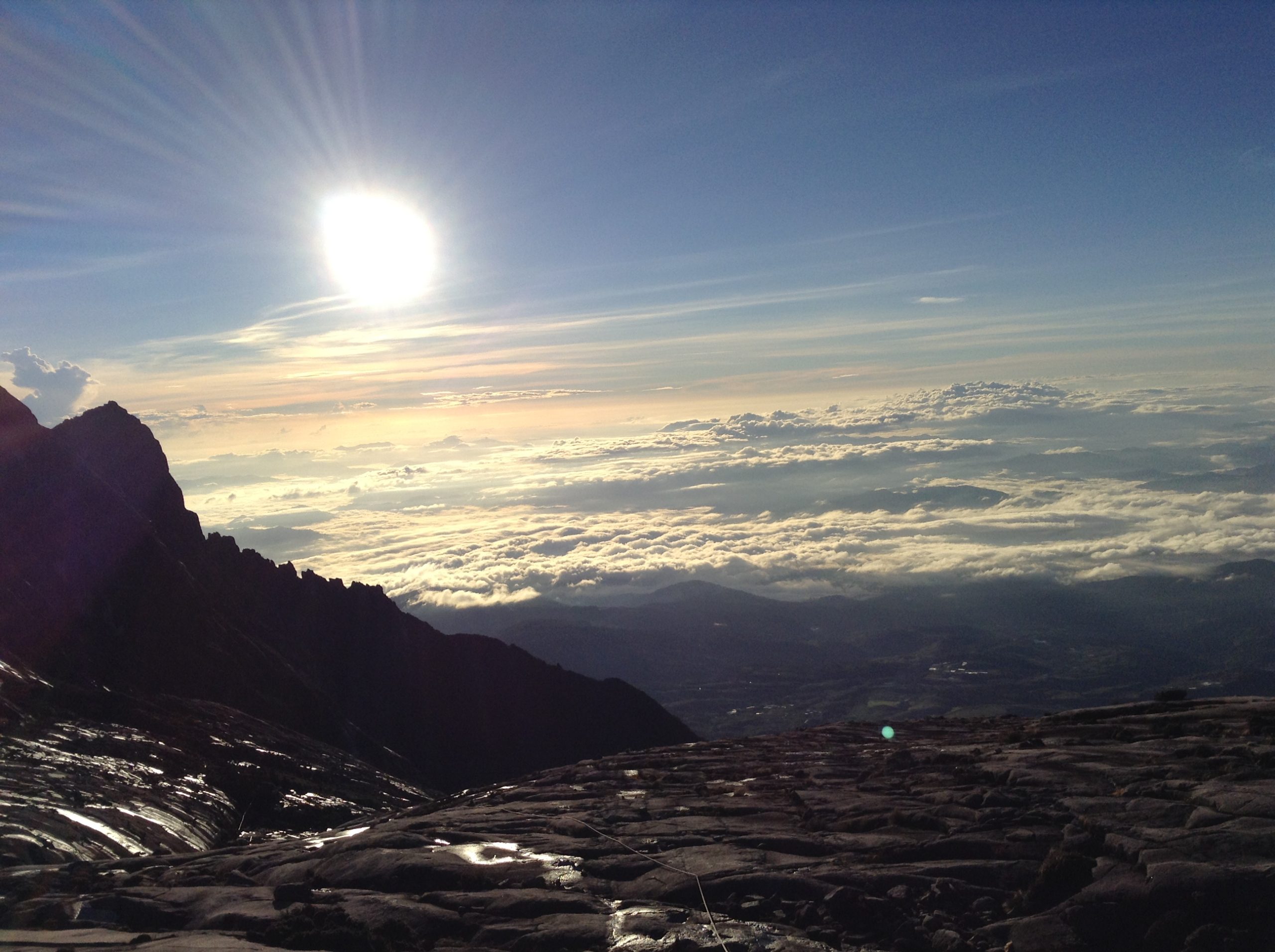

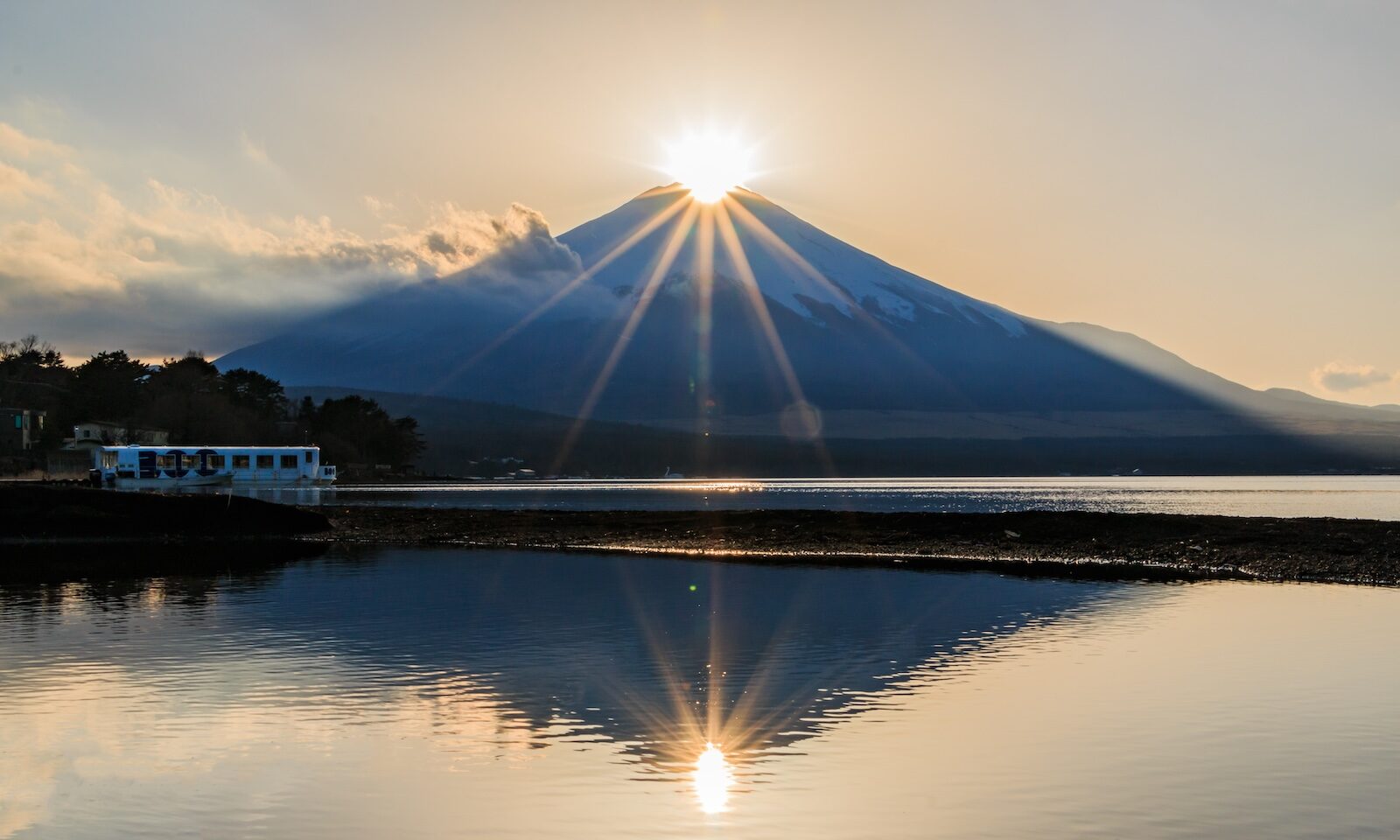
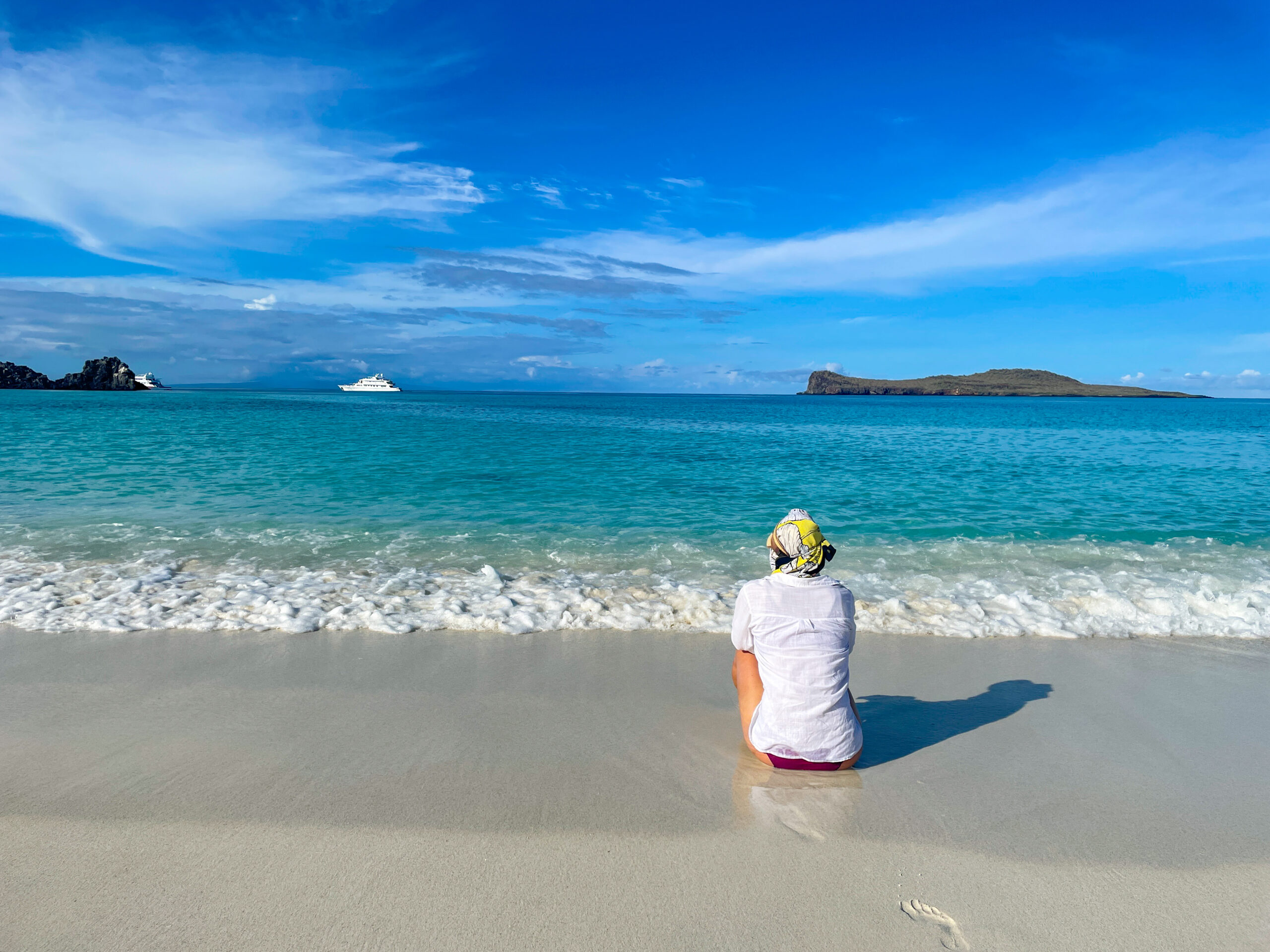


Being pedantic here, but I think it would be more appropriate to call it KK, as that’s how it is normally called (like KL = Kuala Lumpur), rather than Kota. There are other Kotas in Malaysia. I usually see this one called KK.